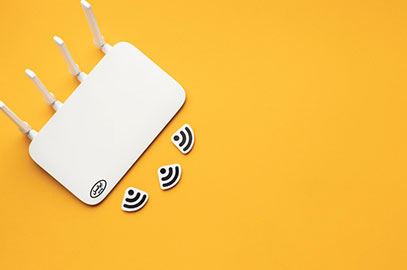Tips on setting up a smart home

Smart homes are supposed to make our life easier and more orderly. However, the fact is that smart home products are not yet available for any home. Before deciding to bring a complete set of smart products to your home, you should consider some important points. The study of this article will allow you to have a successful and pleasant experience of setting up a smart home.
Before getting to decide on, select, install, and launch different components of your smart home, most of which are smart products, you must provide a set of requirements. Without having the things that will be mentioned below, installing and setting up a smart home can create serious challenges for you and even be financially damaged.
A reliable Internet connection
Do you know how many tools in your home rely on an Internet connection? Does your Internet connection have enough speed to handle the needs of all devices simultaneously? Now suppose that more equipment is going to add to this set. It’s something that happens when you bring smart products to your home, and in this situation, the number of Internet-based devices at your home will increase very fast.
Undoubtedly, the first step in setting up a smart home is to have an Internet connection with enough bandwidth to run it. If you already have trouble with your Internet connection, adding more devices to its consumers’ list will only increase your problems. The minimum thing to do is to check how you can improve your Internet connection status without changing the equipment you are using.
Note that a low-speed Internet connection is not suitable for any user. If your smart equipment can’t communicate properly with each other and the Internet, there is no reason for investing or buying them. As a solution, you can upgrade your Internet connection to a service which gives you more bandwidth. As an alternative solution, you can increase the speed of your current service as much as possible.
Compatibility
When the concept of smart home came up with its first steps, the issue of compatibility (or lack of compatibility) of different devices was an important issue. By time and with the gradual maturity of this industry, the issue of incompatibility creates fewer problems.
Today, most products support different protocols, so you have more options when you install them. On the other hand, software solutions have made communication between different smart devices much easier, even when they use different protocols.
Naturally, you want all your smart devices to communicate with one another. If it doesn’t happen, you probably lose some of their key features. It’s best to start your smart home with protocols that support more products. Also, before you buy smart devices, make sure they are compatible.
Extra Costs
Sometimes it seems that the smart home products give you all the capabilities at your fingertips for free. However, when you use them in practice, you may have to pay extra fees. For example, security cameras that are one of the most popular smart home products allow you to keep an eye on anything happening at your home. Typically, you can see a real-time image of what your cameras see at the same time, as well as pre-recorded clips (for example, when something moves in front of the camera). The point is that these clips are usually kept for a short time (usually 24 hours), and you need to pay extra cost if you want to have more time.
Regardless of the type of product that you decide to buy for your smart home, check if you need to pay a monthly fee to access its full set of features. Note that for optimal use of your smart products, you should never rely just on their manuals. When deciding to purchase and also installing and setting up your devices, you should do a thorough search on the Internet and consider the different aspects of this process.
Real expectations
The fact is that manufacturers of smart home products don’t want you to know that smart devices aren’t perfect at all. Like any other product that deals with complicated and advanced technologies, smart home appliances also sometimes have defects or problems that can be disappointing for you.
In order to increase your chances of success in setting up a smart home, you need to understand a few general rules.
– Always update your devices’ software. In many cases, it’s enough to update the app that you installed on your smartphone.
– Sometimes you will be prompted to update your gadget’s firmware. This can improve the functions of the device or fix some of its problems. However, it’s best not to rush into installing a new firmware. Always try to look at the opinions of other users who have done this on the Internet and get information about the issues you may encounter before proceeding with this process.
If you don’t maintain your smart devices properly, they will run out of service or be susceptible to security risks over time. So always keep your software up-to-date.
Do not hurry
Ultimately, the most important point is that smart homes are still not suitable for everyone. Just like the first generation of personal computers and smartphones, smart home appliances are still in their early stages of development. There is no doubt that the scope of the products of this industry will evolve considerably over the next few years. So, it may be best for you to be patient and look forward to more maturity in this market.
If you are not convinced that you have the time or resources to fully adopt the smart home lifestyle, do not go for it. Future smart home products will definitely be cheaper and will be much easier to set up and maintain.
In general, it can be said that advanced and complex products are not suitable for everyone. Therefore, it is no problem to wait until they fix the shortcomings of existing products. Note that if you delay buying your smart home products for even one year, you will no doubt come up with more satisfying choices.
Related News










